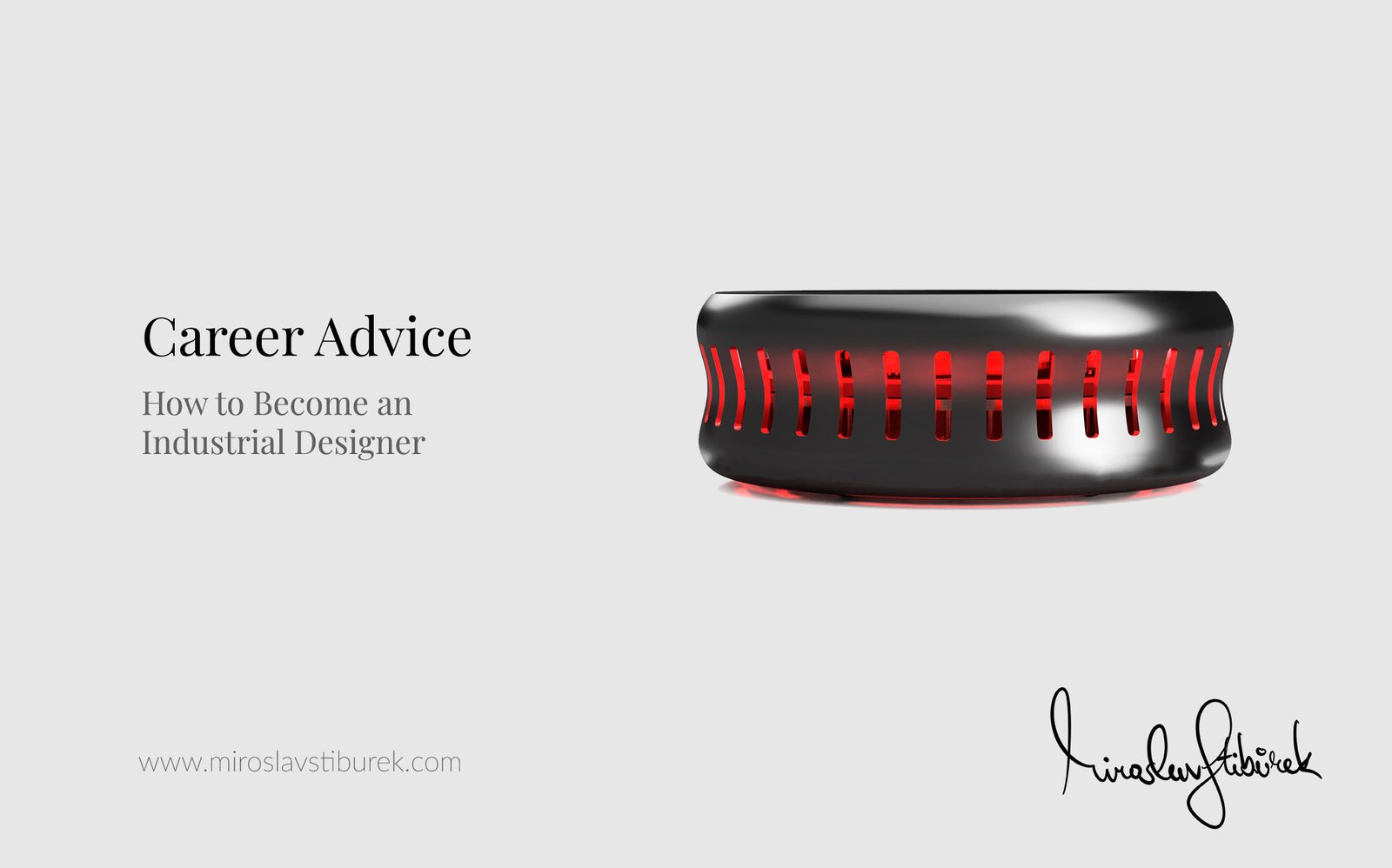
23 Oct How to Become an Industrial Designer
This is a question I sometimes get asked, and I would like to explore that in this article. I will not sugar coat it, becoming an industrial designer and getting work on a regular basis is tough. The reason is that it’s a set of skills that only someone who is developing a new product needs. Companies or inventors who have the budget to innovate and create new products to be launched on the market require an industrial designer. Thus, once a project is finished, the designer is no longer required unless there is another project lined up. In large corporations, this could be the case, but in smaller businesses, not so much. When working with single inventors, it’s never the case. So what do you do?
Well, firstly, to become an industrial designer and get close to the point that you get hired for your skills, is to acquire them. You can go to a school or learn them by yourself if you’re the autodidactic type.
What are the main skills every industrial designer needs to have?
- Rapid creativity and a sense for aesthetics
- Engineering knowledge and manual skills
- Ability to conceptualise, sketch and scribble down ideas
- Create and model design concepts using CAD software
- Understanding of how things work and function
- Knowledge of rapid prototyping and mass production technologies
- Knowledge of marketing, business and user experience
Now, once you have acquired and developed these skills, you can choose which direction to go in terms of getting a job or a project in this field.
Path of an Industrial Designer
All roads lead to Rome, it just depends on which one you would like to take. Each comes with its own challenges. I was lucky enough to experience all these paths. Let’s take a look.
Working for a product company
One way to get a job as an industrial designer is to get employed in a company that manufactures its own products. Here, you will likely be looking at larger companies who invest a lot in innovation and need a designer on a regular basis.
A lot of advantages come with this path, for one, you will have a secured place in a field that is highly volatile. Unless, there is an economic crisis, and companies cut budgets for R&D, you should be good.
The disadvantages come in the form that you will be working on the same products all the time. So if you work for a company producing air conditioning, you will likely become a specialist in the design of air conditioning units, but that will likely end there. It will narrow your future opportunities.
Working for a studio
With a studio, it’s a completely different story. The amount of projects and products you will touch is enormous compared to the previously mentioned path. While for a product company, you will be working on a single project for a year or two, with a studio, you will go from one project to another very quickly. It’s not unusual to have a new project every 1-3 months. The great thing is that it’s exciting as you are getting to know various fields, products, and industries. You are getting valuable experience as the number of projects grows fast, giving you a nice portfolio.
The only disadvantage I see here is that you will not have the opportunity to go into depth about that particular industry, and you will likely be focused just on specific areas of product design. You could be the one who just makes the sketch, or just the 3D model, as there will be other designers, engineers and makers who will take care of the other areas.
Working for yourself
Now, this is the path that is the most tricky one but can be highly rewarding as it gives you the most freedom. However, there is a price to pay. You take matters into your own hands and generate your own projects. You have many options here. You can design, develop and launch your own product. This is great, but here you will also need to have an entrepreneurial spirit to launch your own product company.
You can also freelance as a designer and work with inventors and companies that need a designer on a short-term basis. You may eventually launch your own design studio and take on more designers.
Here, the sky is the limit and gives you a chance to be who you want to be with unlimited earning potential.
The obvious disadvantage of this path is that it’s the riskiest one, with a high chance of failure. Also, you are reliant on yourself to generate new business and pay what you need to pay to live and operate.
Summary
So there you have it. As you can see, there are various paths, but it really comes down to who you are and what you like the most. Do you want to specialise in one industry and learn about how it works on a massive scale? Search for a job as a full-time industrial designer for a product company. Do you like change and want to learn about the product design process? Go with a studio. Do you want absolute freedom in what jobs you take and what you do with your skills? Go on your own.
I hope this has been helpful to you and please, feel free to leave a comment below.



No Comments